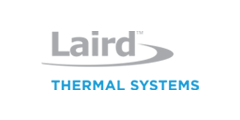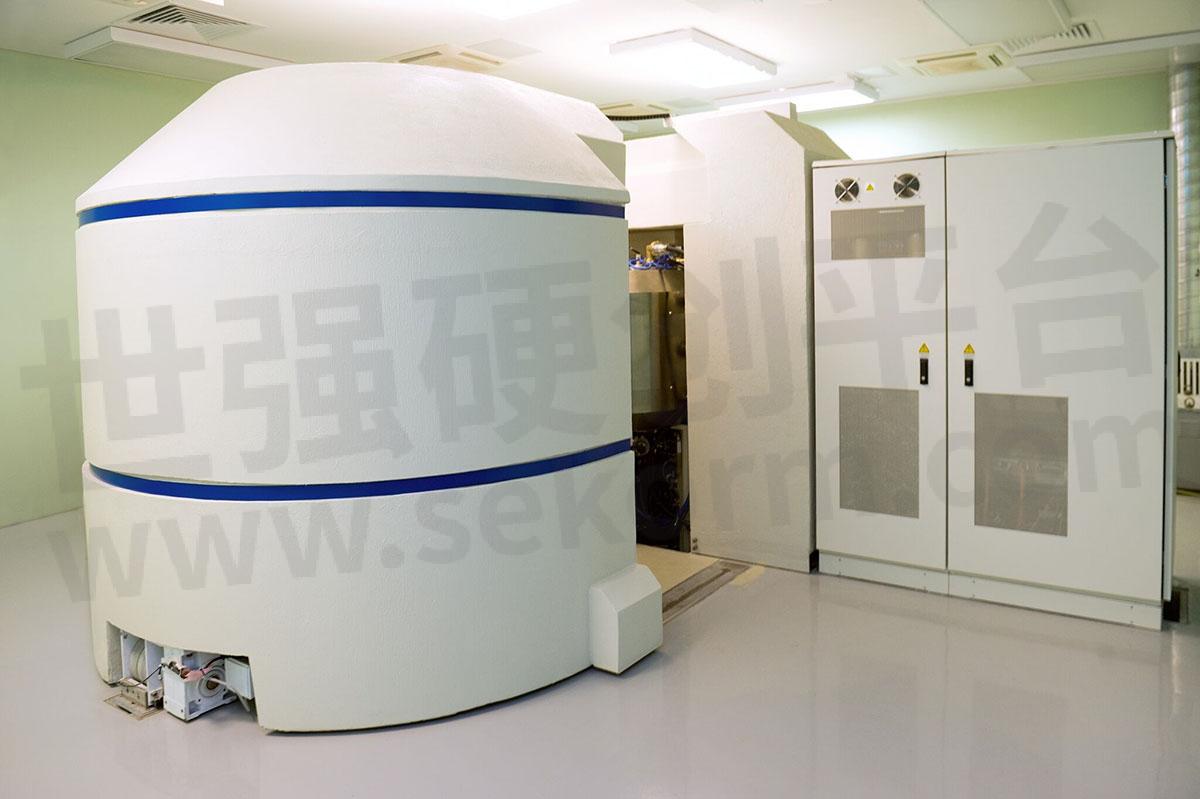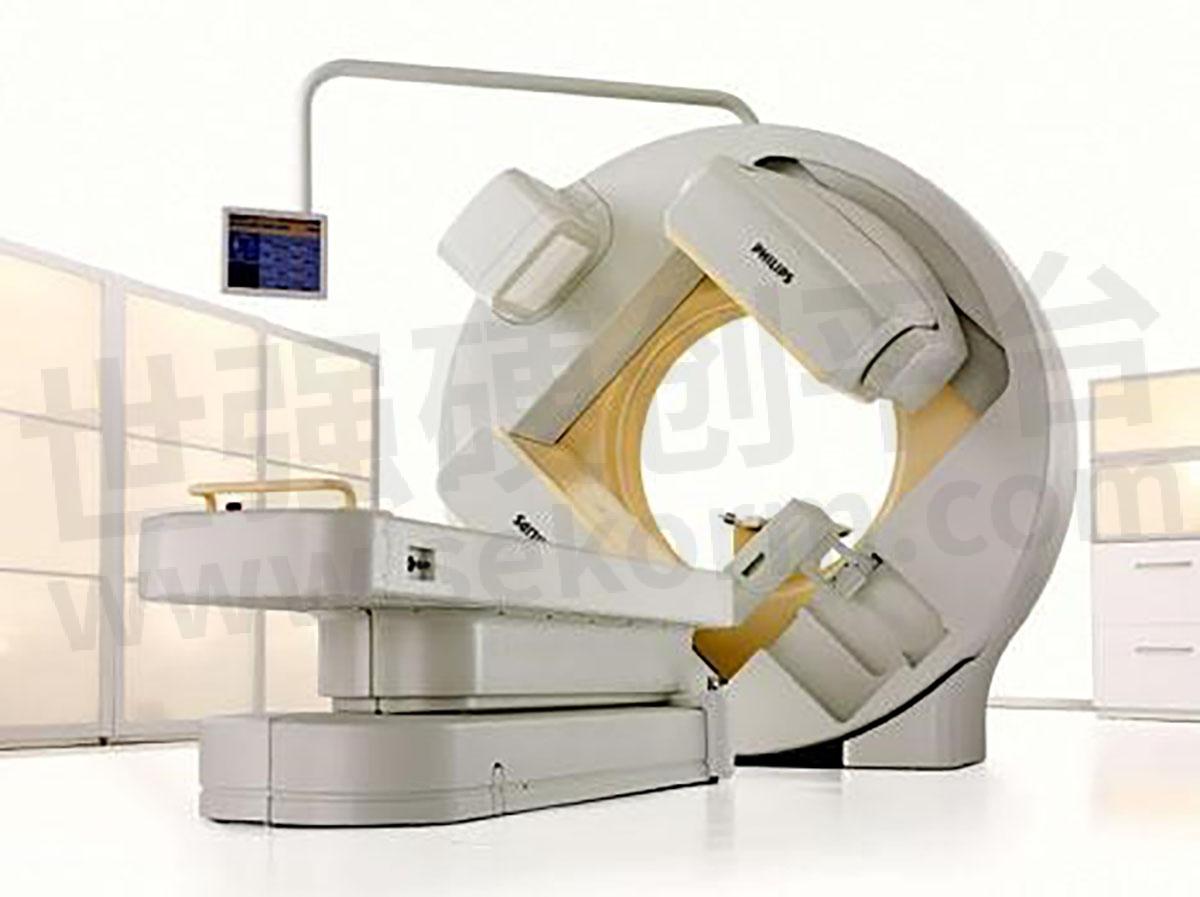Laird Thermal Systems Provides the Liquid Cooling Options for PET and SPECT Scanners

Introduction
Nuclear medicine uses radioactive substances to image the body and treat disease. It looks at both the physiology (functioning) and the anatomy of the body in establishing diagnosis and treatment. Nuclear medicine imaging techniques combine the use of computers, detectors, and radioactive substances. These techniques include:
Positron emission tomography (PET)

Single photon emission computed tomography (SPECT)

Imaging Overview
PET is a gamma-based imaging technique that allows doctors to check for diseases in the body. The scan uses a special dye that contains radioactive tracers. In a PET scan, the patient is injected with a radioactive substance and placed on a flat table that moves in increments through a donut-shaped housing. This housing contains the circular gamma ray detector array, which has a series of scintillation crystals, each connected to a photomultiplier tube. The crystals convert the gamma rays, emitted from the patient, to photons of light, and the photomultiplier tubes convert and amplify the photons to electrical signals. These electrical signals are then processed by the computer to generate images.
SPECT is a technique similar to PET, but the radioactive substances used in SPECT (Xenon-133, Technetium-99, Iodine-123) have longer decay times than those used in PET, and emit single instead of double gamma rays.
PET and SPECT scanners use a specific particle accelerator, known as a cyclotron, to create the radiotracer. Typically made from glucose, the radioactive substance has a very short half-life (i.e., a rapid decay time). The cyclotron typically accelerates an H- ion using alternating electric fields and uses a magnet to bend the path of the charged particle until it hits the target making the substance radioactive.
Cooling Systems
In PET and SPECT systems, cooling both the cyclotron equipment and the detector banks in the imaging systems is required. Temperature control within the cyclotron system is critical for operational integrity, performance accuracy and system reliability.
Liquid Cooling Systems are often the preferred choice to control the temperature of the imaging system.
Cyclotrons require around 80 kilowatts of cooling with 120 liters a minute of liquid flow, while PET and SPECT systems have a heat load range of 1~5KW. In addition, components with PET and SPECT imaging gantry systems are subject to tremendous rotational speeds and acceleration forces (G-forces). As a result, liquid pumps must be able to maintain constant flow and pressure while under stress caused by high g-forces.
Liquid Cooling Solutions
Liquid cooling systems, which are self-contained units that recirculate coolant to a predefined set-point temperature, allow for optimal temperature stabilization for more precise temperature control. Liquid cooling systems are able to dissipate the large amount of heat generated in the densely packed electronic environment of PET systems. The introduction of a liquid coolant into a system of electronics need not be an item of concern as long as the liquid cooling system is designed and assembled properly. Liquid cooling systems offer higher efficiency than air-based heat exchangers, and provide more rapid cooling and higher reliability. Compact liquid cooling systems offer a high coefficient of performance (COP) that ensures efficient, low power operation to maximize uptime and optimize performance. In addition, the standard and custom liquid cooling solution delivers quiet operation in a smaller and lighter system.
One type of liquid cooling system uses a liquid-air heat transfer configuration, whereby a high-pressure pump recirculates the liquid coolant and an air heat exchanger removes the heat from the liquid circuit, dissipating it to the ambient environment by means of a fan. The coolant can be water, a water-glycol mixture, or transformer oil, depending on the temperature at the heat source; an oil-cooled system is used when the temperature exceeds the operational temperature limit of the water-based systems.
A second type of liquid cooling systems uses a liquid-liquid configuration, whereby the pump recirculates the coolant and ambient-temperature facility water is used in a liquid heat exchanger to dissipate heat on the hot side. The liquid-liquid system increases cooling capacity compared with the liquid-air system. These systems can be designed to operate with either water or oil as the coolant liquid, depending on the temperature environment.
A third type of liquid cooling systems is a compressor-based chiller system, whereby the pump recirculates coolant that is chilled to well below ambient temperature. Heat from the coolant is absorbed by the compressor-based system and is dissipated to the outside environment.
The increasing complexity of thermal management means that PET / SPECT system manufacturers often rely on external companies for temperature control solutions. Manufacturers like Laird Thermal Systems offer a series standard and custom liquid cooling systems that provide liquid-to-air, liquid-to-liquid, or chiller-based systems in various sizes and cooling capacities. Their experience in the design, manufacture and servicing of liquid cooling systems, as well as their expertise in pumps, compressor technology, evaporators and heat exchangers, allows manufacturers to focus on their end product design, while leaving the thermal management issues to the experts.
For all types of liquid cooling systems, additional features can add precise temperature control, variable coolant flow rate, coolants with corrosion prohibitors and coolant filtration, as needed. Temperature control of multiple liquid circuits is often required, as is high operational temperature. Control of multiple pressure drop settings to accommodate both low and high-pressure conditions may be needed.
Liquid Cooling System Pump
One of the most critical components in a liquid cooling system is the pump. Pumps are in constant operation when the unit is turned on and typically have the shortest mean time between failure (MTBF) of all components due to friction wear of bearings, pump blades and seals. If poorly chosen, the pump will fail prematurely and the liquid cooling system will fail and cause the end instrument to stop working. This can be a problem for expensive medical, laser or semiconductor equipment where hundreds of thousands of dollars could be lost per day. Compared to centrifugal pumps, spindle screw pumps provide higher reliability, performance and efficiency for liquid cooling systems.
Spindle screw pumps also have a simple construction. A three-screw pump, for example, features a single rotor element that is powered, while two others are idle. The idle rotors are rotated by liquid pressure, essentially generating a fluid bearing, or hydrodynamic film, that provides radial support similar to journal bearings. Symmetrical pressure loading on the power rotor eliminates the need for radial bearings to absorb radial forces.
The pump head and motor are combined into one waterproof housing unit and can push either oil or water coolant. The fluid delivered by a screw pump does not rotate, but moves linearly. The rotors work like endless pistons, which continuously move forward. Flow through a screw pump is axial and in the direction of the power rotor. The inlet hydraulic coolant that surrounds the spindles is trapped as the spindles rotate. The coolant is pushed uniformly with the rotation of the spindles along the axis and is forced out the other end. Due to this the power consumption is reduced, higher efficiency is achieved and the overall motor size can be reduced. This also enables the spindle screw pump to move fluids of higher viscosity without losing flow rate, and pressure changes have little impact on spindle screw pumps This is important in a rotating application, such as a CT gantry system used in a CT scanner, as the pump is able to maintain constant flow and pressure while under high stress caused by high g-forces.
Long life operation is built into the spindle screw design due to no metal-to-metal contact between moving components. This minimizes friction wear and abrasions that can cause cavitation. The flexible mechanical assembly allows the use of a smaller strainer with higher mesh size that extends maintenance intervals and reduces the overall cost of ownership. No metal-to-metal contact also results in the elimination of pulsations, even at high flow rates, making the unit very quiet during operation. The end result is smooth and quiet operation even at high revolution rates and pressure.
Spindle screw technology is ideally suited for liquid cooling systems in environments that require low noise conditions, such as imaging systems for patient modeling.
Thermoelectric Cooling
For imaging systems and sub-systems with lower head loads, Laird Thermal Systems offers solid-state thermoelectric cooler assemblies. Thermoelectric cooler assemblies utilize thermoelectric coolers to transfer heat by air or conduction methods that include integrated temperature controls. Offered in air-to-air and direct-to-air versions, the Tunnel Series (up to 40W) and PowerCool Series (up to 195W) remove the passive heat load generated by the ambient environment in order to stabilize the temperature of sensitive components used in medical imaging equipment like PET/SPECT detectors. The liquid-to-air Liquid Series (up to 160W) offers dependable, compact performance by cooling objects via liquid to transfer heat.
All of Laird Thermal Systems’ thermoelectric coolers are designed to achieve a high coefficient of performance (COP) to minimize power consumption.
Conclusion
Thermal management of medical imaging systems is more challenging than ever. Power densities continue to increase while product form factors continue to shrink. Simple thermal management solutions, such as adding a fan or heat sink, are typically no longer viable to meet required performance and reliability specifications. In today’s complex medical operating environment, thermoelectric cooler assemblies are necessary to provide precision cooling in a variety of modular platforms. Given the complexity of some PET and SPECT systems, the use of a custom designed liquid cooling systems with plug-and-play components may be a good solution. For example, quick connect fittings to allow easy service and maintenance, such as a bottom drain for removing the coolant by gravity, or a pump that is easy to swap out if necessary, add to the system’s ease-of-use. Custom housing configurations for unique environments may be required. Laird Thermal Systems has the knowledge to custom design thermoelectric cooler assemblies and liquid cooling systems for PET and SPECT applications, as well as the experience to support and service them.
Applications
Medical
Medical Imaging
Product Section
Liquid Cooling Systems
- +1 Like
- Add to Favorites
Recommend
- Laird Thermal Systems’ Prototyping Liquid Cooling Systems
- Aavid‘s Liquid Cooling Systems: Modular or fully customized liquid cooling optimized for improved heat dissipation in condensed volumes
- Laird Thermal Systems‘ Testing Liquid Cooling Systems Can Be Tailored According to Customer Specifications and Applicable Industry Standards
- Trend towards Liquid Cooling Systems
- Common Coolant Types and Their Uses in Liquid Cooling Systems
- Liquid to Liquid Ambient Cooling Systems for Semiconductor Tools
- Aavid‘s Modular Liquid Cooling Systems: Build a semi-custom system with high performance compatible components
- Generative AI and EV Batteries: Why Liquid Cooling?
This document is provided by Sekorm Platform for VIP exclusive service. The copyright is owned by Sekorm. Without authorization, any medias, websites or individual are not allowed to reprint. When authorizing the reprint, the link of www.sekorm.com must be indicated.





























































































































































































































































































































































































































































































































































































































































































































































































































































































